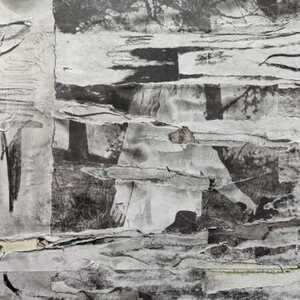Requiem for Summit Ridge Drive
Quite aside from his music (and if you know his music you know that’s quite an aside), Artie Shaw was an interesting man. He was one of the few people ever to turn away from acclaim and for the most part, stay turned away (are you listening, Roger Daltry and Pete Townsend?). He quit performing in 1954 when he might have kept making hits. This was an act considered so remarkable that 50 years later it’s in the first sentence of his obituary.
His seven wives (including such pin-up girls of his day as Ava Gardner and Lana Turner) suggest that he may have been an easy man to love, but not live with. In her autobiography Gardner wrote of his constant attempts to educate her. And in filmed interviews and in prose he comes off as one of those people who seems to be disappointed all the time you’re not as smart as he is.
The thing is, he actually was pretty smart and a true innovator in jazz. He was among the first to add strings to it and was the very first to add the harpsichord.
In regards to the former, I came to know Shaw’s music when I took a course in jazz history, and the instructor showed a rare copy of the documentary, “Artie Shaw: Time is All You’ve Got,” which is unfortunately not widely availible on video, despite having won an academy award. One of the moments I will never forget from that documentary is a close-up of Shaw just listening to a 1930s recording of one of his compositions for clarinet backed by a string quartet. It’s quite a lovely moment, and if there’s any silver lining to Shaw’s death, it’s that maybe now the film will get a DVD release (he was reportedly the one holding it back).
In 1940 with his “Gramercy Five,” a “jazz chamber group” that included a harpsichord, he made one of my favorites among all the tracks of his that I have heard, “Summit Ridge Drive.” It still sounds at least 20 years ahead of its time to me.
His sound remains a definitive one of its period and is still heard today in the seemingly unlikeliest of places. Next time you watch that episode of “Friends” where Joey helps the apartment manager learn how to ballroom dance, listen to the music. That’s Shaw’s arrangement of “Begin the Beguine.”
After leaving music he claimed to want to devote himself to being a writer, and actually he was a pretty good one. I’ve got a lot of regard for his autobiography, “The Trouble With Cinderella.” But only three books in 50 years suggests Cinderalla wasn’t the only one having trouble.
I’m told jazz enthuisiasts still debate over whether Shaw or Benny Goodman was the better clarient player of the swing era. I’m firmly in the Shaw camp. His hit record of “Stardust” always gives me images of a rain-swept street in a seaside town in the ’40s, tinged with nostalgia for a place I’ve never been in a time I never lived in.












